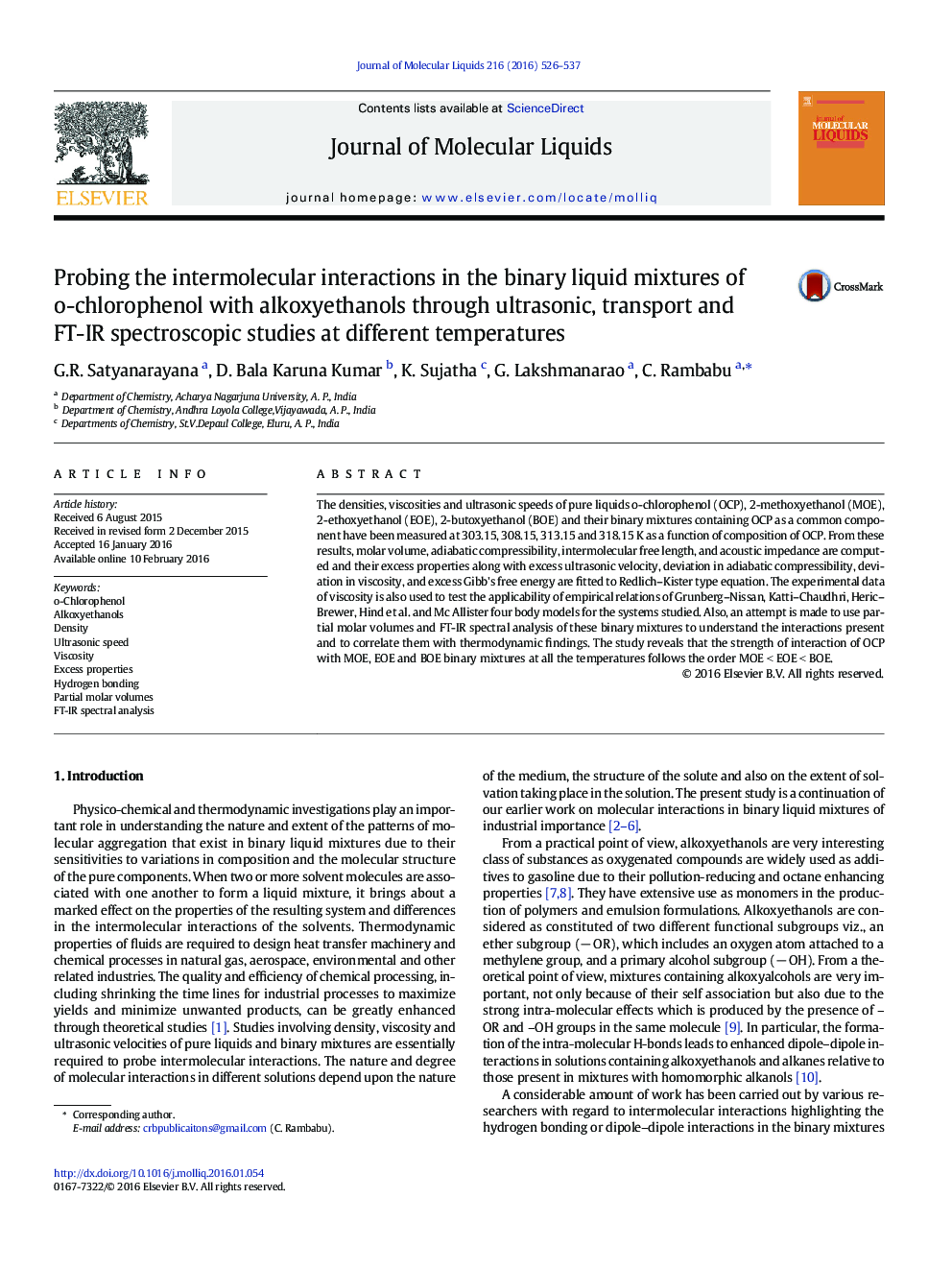| Article ID | Journal | Published Year | Pages | File Type |
|---|---|---|---|---|
| 5410024 | Journal of Molecular Liquids | 2016 | 12 Pages |
â¢Binary mixtures of o-chlorophenol with some alkoxyethanols are studied.â¢Density, viscosity, and sound speeds are measured and partial molar volumes are calculated at (303.15 to 318.15) K.â¢Excess thermodynamic properties indicated deviation from ideal behaviour.â¢Viscosities are correlated with various empirical relations.â¢IR data suggest hydrogen bonding in the mixtures and support thermodynamic findings.
The densities, viscosities and ultrasonic speeds of pure liquids o-chlorophenol (OCP), 2-methoxyethanol (MOE), 2-ethoxyethanol (EOE), 2-butoxyethanol (BOE) and their binary mixtures containing OCP as a common component have been measured at 303.15, 308.15, 313.15 and 318.15Â K as a function of composition of OCP. From these results, molar volume, adiabatic compressibility, intermolecular free length, and acoustic impedance are computed and their excess properties along with excess ultrasonic velocity, deviation in adiabatic compressibility, deviation in viscosity, and excess Gibb's free energy are fitted to Redlich-Kister type equation. The experimental data of viscosity is also used to test the applicability of empirical relations of Grunberg-Nissan, Katti-Chaudhri, Heric-Brewer, Hind et al. and Mc Allister four body models for the systems studied. Also, an attempt is made to use partial molar volumes and FT-IR spectral analysis of these binary mixtures to understand the interactions present and to correlate them with thermodynamic findings. The study reveals that the strength of interaction of OCP with MOE, EOE and BOE binary mixtures at all the temperatures follows the order MOEÂ <Â EOEÂ <Â BOE.
